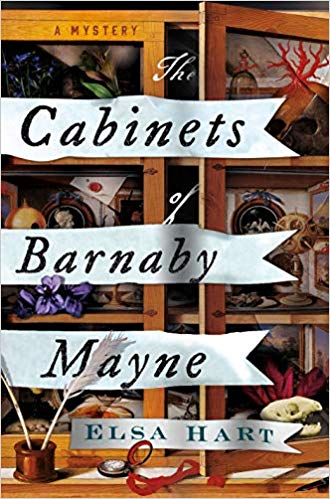 The Cabinets of Barnaby Mayne by Elsa Hart
The Cabinets of Barnaby Mayne by Elsa Hart Format: eARC
Source: supplied by publisher via Edelweiss, supplied by publisher via NetGalley
Formats available: hardcover, ebook, audiobook
Genres: historical fiction, historical mystery, mystery
Pages: 352
Published by Minotaur Books on August 4, 2020
Purchasing Info: Author's Website, Publisher's Website, Amazon, Barnes & Noble, Kobo, Bookshop.org
Goodreads
From the author of the acclaimed Li Du novels comes Elsa Hart's new atmospheric mystery series.
London, 1703. In a time when the old approaches to science coexist with the new, one elite community attempts to understand the world by collecting its wonders. Sir Barnaby Mayne, the most formidable of these collectors, has devoted his life to filling his cabinets. While the curious-minded vie for invitations to study the rare stones, bones, books, and artifacts he has amassed, some visitors come with a darker purpose.
For Cecily Kay, it is a passion for plants that brings her to the Mayne house. The only puzzle she expects to encounter is how to locate the specimens she needs within Sir Barnaby’s crowded cabinets. But when her host is stabbed to death, Cecily finds the confession of the supposed killer unconvincing. She pays attention to details—years of practice have taught her that the smallest particulars can distinguish a harmless herb from a deadly one—and in the case of Sir Barnaby’s murder, there are too many inconsistencies for her to ignore.
To discover the truth, Cecily must enter the world of the collectors, a realm where intellect is distorted by obsession and greed. As her pursuit of answers brings her closer to a killer, she risks being given a final resting place amid the bones that wait, silent and still, in the cabinets of Barnaby Mayne.
My Review:
I adored this author’s Li Du series (start with Jade Dragon Mountain and prepare to be lost for several days), so when I noticed that she had moved from early 18th century China to early 18th century London for her latest, I couldn’t wait to see how that transition worked.
The fascinating thing about moving from Li Du to Cecily Kay and her former school friend Meacan Barlow is how strangely the two settings resemble each other. Li Du’s China in the early 18th century was a closed world – at least to the West. And Li Du is an outsider, an exiled imperial librarian on his way out of his own country.
The world of the scholarly, acquisitive, obsessive collectors of early 18th century London is just as much of a closed world, albeit in a completely different way. The collectors are a closed society, restricting membership, keeping all of their secrets locked up in their beautiful but often hidden presentation cabinets.
And Cecily and Meacan are also both outsiders to this world, which is exclusively male. They are both barely tolerated interlopers who exist on the fringes of this expensive and exclusive preserve.
Just like so many who are treated as outsiders in the worlds they inhabit, Cecily and Meacan are both keen observers of the situation in which they find themselves. They are ignored but intimate inhabitants of a world they are not believed to truly understand.
But of course they do. And frequently better than the men who are considered to be its prime movers and leading lights. Because they have no vested interest in maintaining the status quo – quite the reverse – they see situations and people with much clearer vision than the supposed cognoscenti.
And what they see is a confessed killer whose confession makes no sense whatsoever, and an investigation that is determined to pin the death of Barnaby Mayne on the most convenient suspect rather than seek out the real murderer – who must be one of the wealthy and influential collectors themselves.
A killer who is content to have the official investigation look elsewhere – but unwilling to countenance two amateurs poking their noses into his crimes.
Escape Rating A+: The world of the collectors was absolutely fascinating, just by itself. For context, this was the time period when the infamous Elgin Marbles were essentially looted from Athens and shanghaied to England.
While Lord Elgin’s looting of the Parthenon was on rather a grand scale, the society of collectors, of whom the late (and fictional) Barnaby Mayne was one of the leading lights, did the same thing, not quite on the same scale, all over the world.
Those that were capable went on their own expeditions of acquisition – or theft if you prefer – while others sponsored, basically, treasure hunters and tomb robbers to commit their thievery for them.
The entire concept manages to be both the start of the great museums we have today and utterly appalling at the same time.
As fascinated as I was by the setting for this story, it was Cecily and Meacan who really captured my attention and held it to the end. The way that their minds worked, and the way that they worked together to solve the murder, felt like it ripped the veil off of the usual portrayal of women of this period – a time period which borders on the Regency. Because in this story we see both how the men of this closed society – and the men of officialdom – see these two women and are able to contrast that with how they perceive themselves and the world around them..
On the one hand, they often play the roles that the world expects them to play. They are quiet and decorous and studying subjects considered fit for ladies – if barely. While on the other hand they see a great deal, know even more, and are caught in the position where they have to pretend to be one thing while secretly being another.
And while earning a living in Meacan’s case or maintaining a fragile independence in Cecily’s. They inhabit their era in a subversive way that allows us to see ourselves in them – and rail at the limitations they face.
The Cabinets of Barnaby Mayne manages to be both an atmospheric and immersive piece of historical fiction, every bit as meticulously detailed as the labels on Barnaby Mayne’s cabinets, while also giving us two marvelously drawn female protagonists in Cecily and Meacan. All wrapped around an intricately twisted mystery that holds the reader’s attention to the very end.

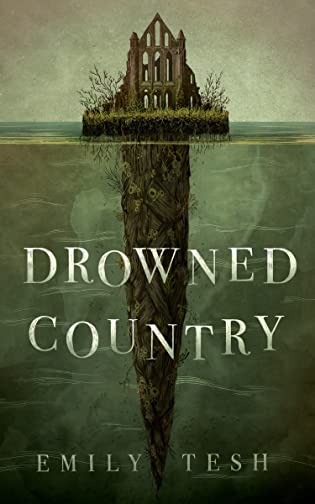 Drowned Country (The Greenhollow Duology, #2) by
Drowned Country (The Greenhollow Duology, #2) by  When I finished
When I finished 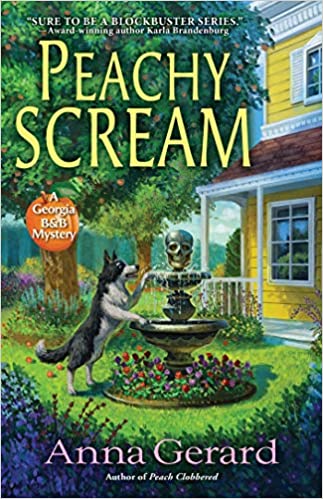 Peachy Scream (Georgia B&B #2) by
Peachy Scream (Georgia B&B #2) by 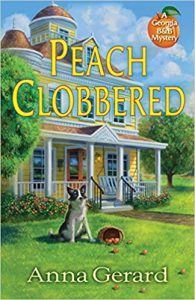 Escape Rating B: Anyone who has spent their school years being endlessly compared to an older sibling or cousin and always failing to measure up will understand my reaction to Peachy Scream. I absolutely loved Peach Clobbered and picked up Peachy Scream because I was hoping for more of the same – or hopefully even better – in the second book in the series now that the setting and characters had been established.
Escape Rating B: Anyone who has spent their school years being endlessly compared to an older sibling or cousin and always failing to measure up will understand my reaction to Peachy Scream. I absolutely loved Peach Clobbered and picked up Peachy Scream because I was hoping for more of the same – or hopefully even better – in the second book in the series now that the setting and characters had been established.

 The Friendship List by
The Friendship List by  I loved the way that they each managed to work their way out of their respective ruts. It also felt very real that they had to be separate for a few weeks in order to make that happen. They were clearly enabling each other to stay stuck, whether intentionally or not.
I loved the way that they each managed to work their way out of their respective ruts. It also felt very real that they had to be separate for a few weeks in order to make that happen. They were clearly enabling each other to stay stuck, whether intentionally or not.
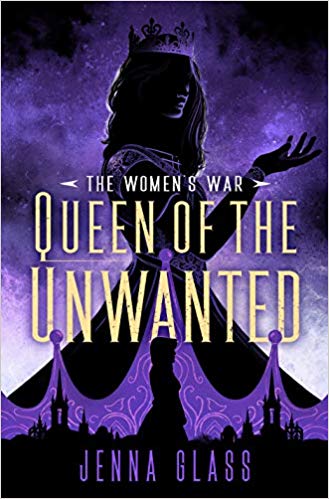 Queen of the Unwanted by
Queen of the Unwanted by 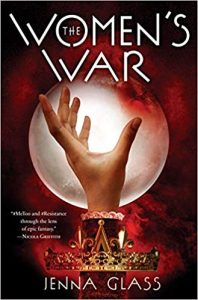 I picked up this book because for the most part I enjoyed the starting book in this series, The Women’s War. But I have to say that I found the message of that first book to sometimes be heavy-handed. Not enough to spoil my enjoyment, but more than enough to make me wonder what would happen next.
I picked up this book because for the most part I enjoyed the starting book in this series, The Women’s War. But I have to say that I found the message of that first book to sometimes be heavy-handed. Not enough to spoil my enjoyment, but more than enough to make me wonder what would happen next. Or at least, not until the very end, when the action suddenly proceeds apace, only to leave readers with multiple terrible book hangovers as they wait for the next book. Whenever it appears. I listened to 80% of this and then read the rest. The audio was interesting enough to keep me occupied while driving, but when things picked up I couldn’t stand to continue at that slow pace.
Or at least, not until the very end, when the action suddenly proceeds apace, only to leave readers with multiple terrible book hangovers as they wait for the next book. Whenever it appears. I listened to 80% of this and then read the rest. The audio was interesting enough to keep me occupied while driving, but when things picked up I couldn’t stand to continue at that slow pace.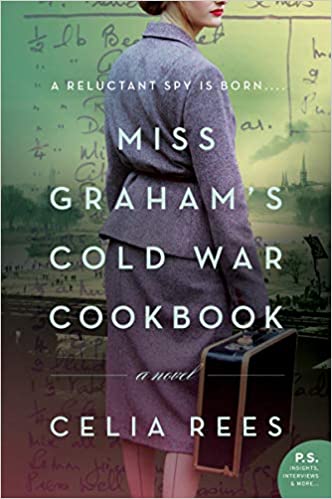 Miss Graham's Cold War Cookbook by
Miss Graham's Cold War Cookbook by  The Woman Before Wallis by
The Woman Before Wallis by 
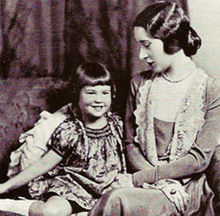

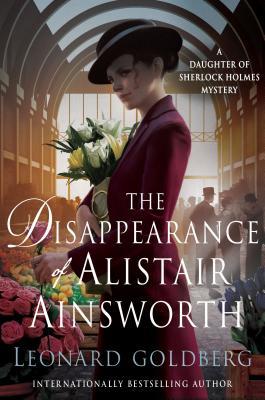 The Disappearance of Alistair Ainsworth (The Daughter of Sherlock Holmes Mysteries #3) by
The Disappearance of Alistair Ainsworth (The Daughter of Sherlock Holmes Mysteries #3) by  After yesterday’s book, I was looking, partly for comfort but mostly for something where I knew what I was letting myself in for before I started. (Also looking for NOT a 700 page doorstop!) Then I saw that the fourth book in this series,
After yesterday’s book, I was looking, partly for comfort but mostly for something where I knew what I was letting myself in for before I started. (Also looking for NOT a 700 page doorstop!) Then I saw that the fourth book in this series, 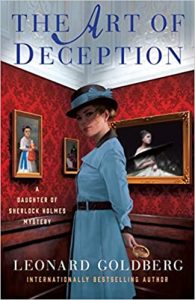 What struck me was the attitude towards the German agents who had kidnapped Ainsworth. There is a tendency in times of war to dehumanize the enemy in order to justify the war and all the things that happen within it. But the perspective of Germans as a race rather than a nationality, and the way that national characteristics had become easy stereotypes felt both logical for their time and place AND sat uneasily at the same time. It reminded me that in the original stories, Holmes and Watson are creatures of their time, with all of the racism and sexism and plenty of other terrible -isms that were part of that era. I was painfully aware that I wanted them to be better because they are characters that I love, but that they were not, no matter how much more recent adaptations have tried to ameliorate or eliminate those tendencies.
What struck me was the attitude towards the German agents who had kidnapped Ainsworth. There is a tendency in times of war to dehumanize the enemy in order to justify the war and all the things that happen within it. But the perspective of Germans as a race rather than a nationality, and the way that national characteristics had become easy stereotypes felt both logical for their time and place AND sat uneasily at the same time. It reminded me that in the original stories, Holmes and Watson are creatures of their time, with all of the racism and sexism and plenty of other terrible -isms that were part of that era. I was painfully aware that I wanted them to be better because they are characters that I love, but that they were not, no matter how much more recent adaptations have tried to ameliorate or eliminate those tendencies.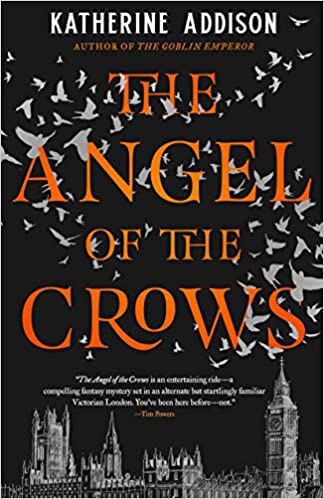 The Angel of the Crows by
The Angel of the Crows by 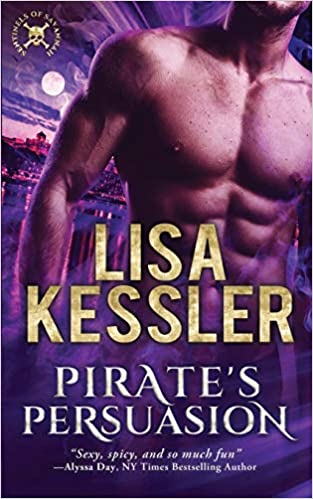 Pirate's Persuasion (Sentinels of Savannah #4) by
Pirate's Persuasion (Sentinels of Savannah #4) by 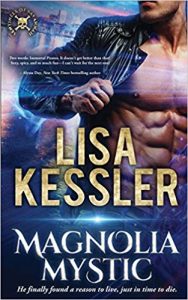 Pirate’s Persuasion is the 4th book in the
Pirate’s Persuasion is the 4th book in the  Ship’s carpenter Drake Cole has found immortality more of a burden than the others, but still chose not to give it up when faced with the choice in
Ship’s carpenter Drake Cole has found immortality more of a burden than the others, but still chose not to give it up when faced with the choice in  Escape Rating B: The premise behind this series is still an absolute hoot. On the one hand we have those immortal pirates. And who doesn’t love a good pirate romance? On the other hand, we have, well, the 21st century in which they are still living. On my third hand (call me an octopus for this one) we have not just the Holy Grail that gave the crew their immortality, but also other ancient and extremely powerful artifacts, like Pandora’s Box featured in
Escape Rating B: The premise behind this series is still an absolute hoot. On the one hand we have those immortal pirates. And who doesn’t love a good pirate romance? On the other hand, we have, well, the 21st century in which they are still living. On my third hand (call me an octopus for this one) we have not just the Holy Grail that gave the crew their immortality, but also other ancient and extremely powerful artifacts, like Pandora’s Box featured in 